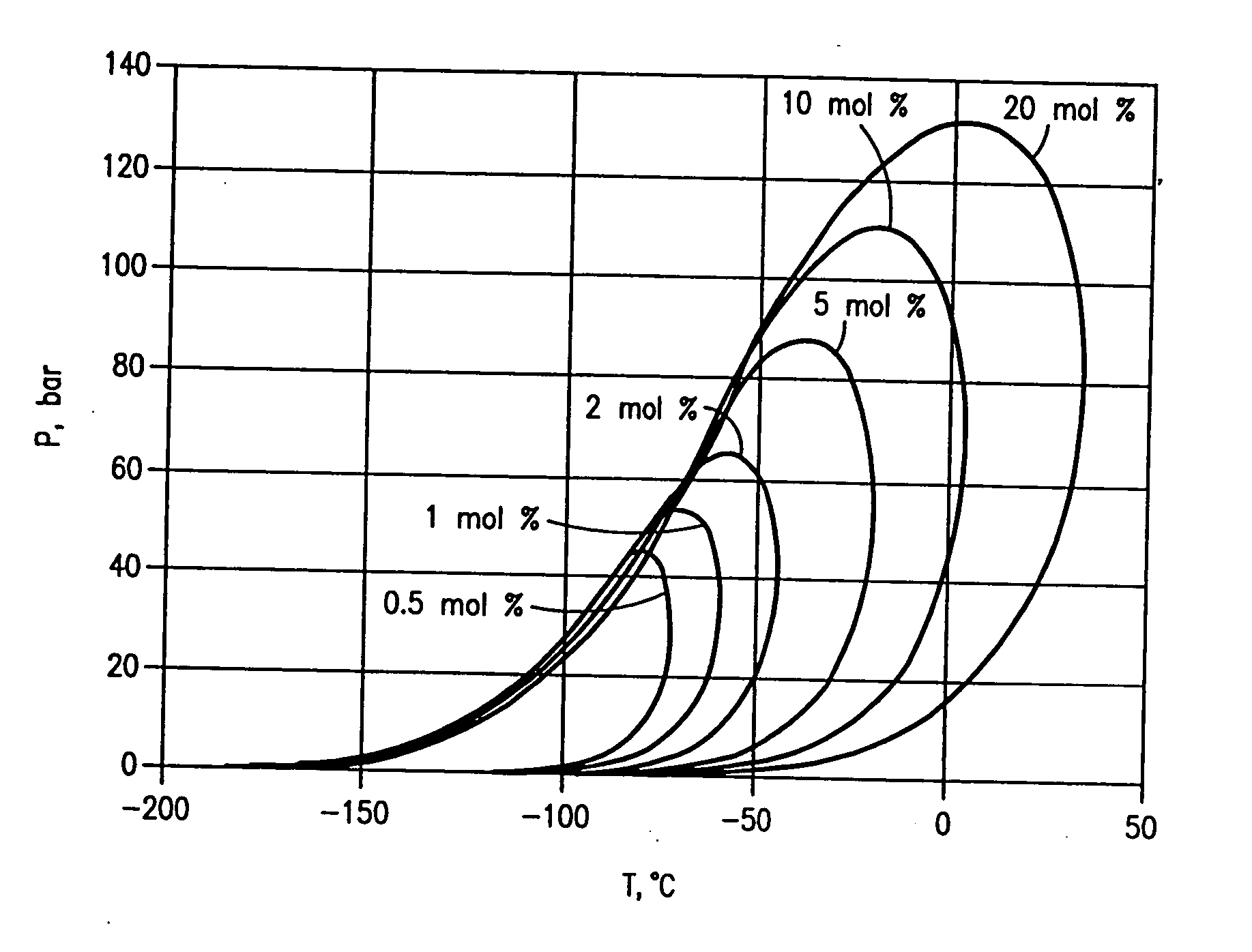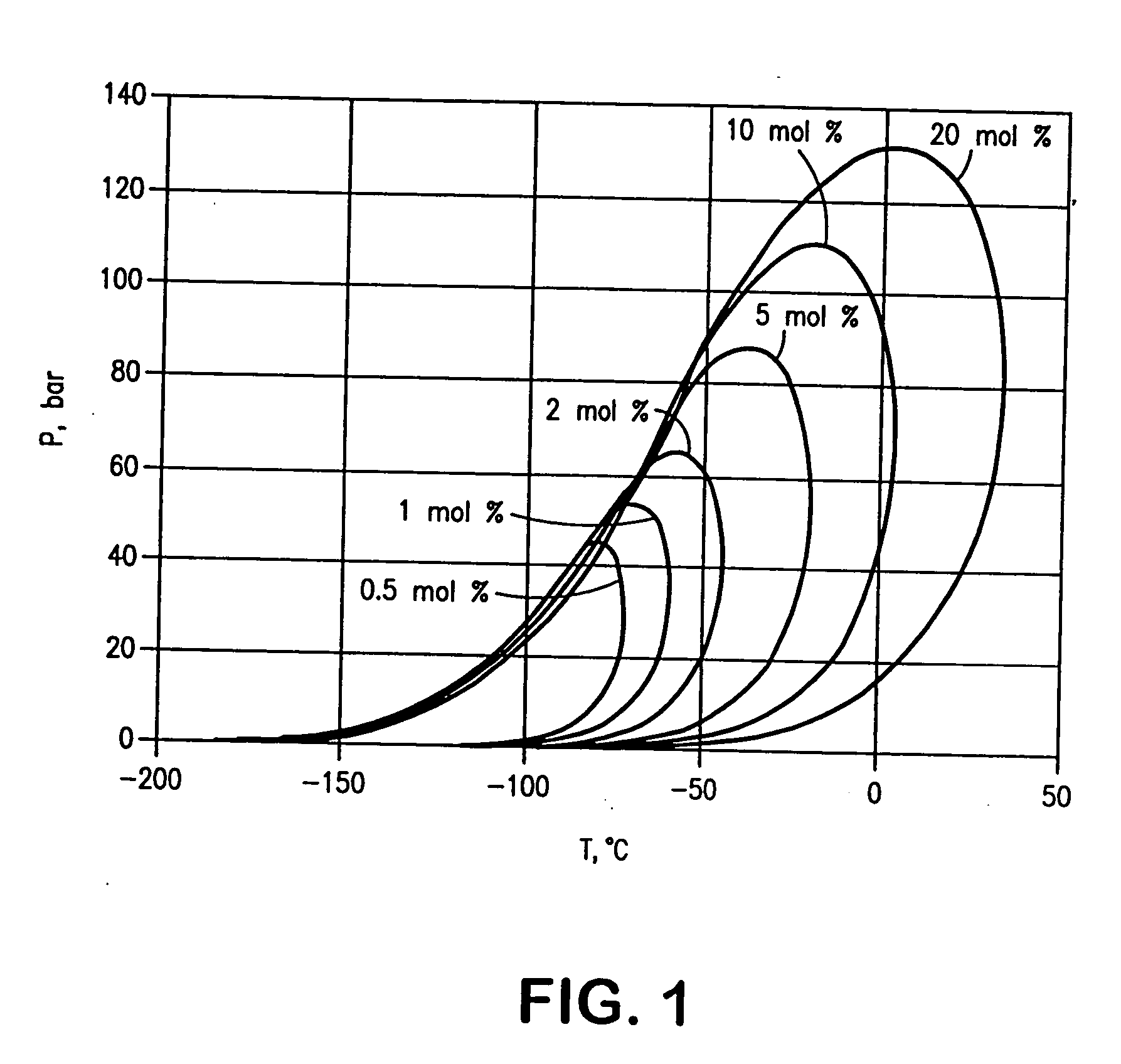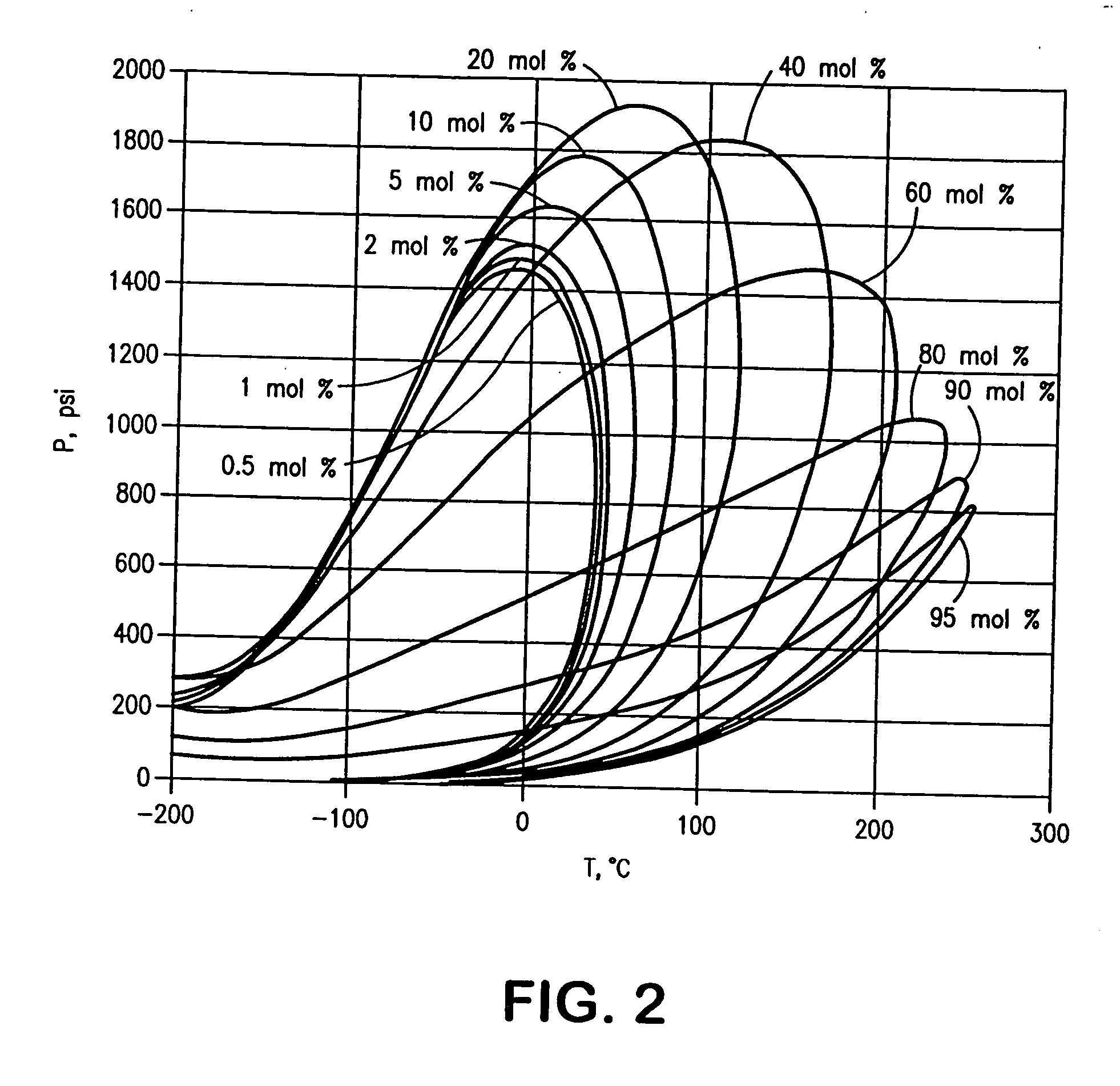Method for transporting synthetic products
a technology of synthetic chemicals and products, applied in the direction of gaseous fuels, mechanical equipment, fuels, etc., can solve the problems of uneconomical transportation of dimethyl ether into a relevant fuels market, relatively expensive construction and operation of lng plants, and inability to economically convert natural gas within that market location to dimethyl ether
- Summary
- Abstract
- Description
- Claims
- Application Information
AI Technical Summary
Benefits of technology
Problems solved by technology
Method used
Image
Examples
example
[0085] Referring now to FIG. 3, a natural gas stream containing the following compounds in the mole percentages shown:
ComponentMol %methane92.0ethane2.4propane1.6iso-butane1.0n-butane1.5iso-pentane0.4n-pentane0.4Non-combustibles0.7
is produced at a production site 10 located in central Russia at a rate of about 2.5 billion ft3 / day (bcfd) and wellhead pressure of 2000 psi (137.9 bar). A portion of this natural gas (about 0.25 bcfd) is pre-treated to remove particulates, water, and other contaminants (not shown), and is thereafter converted at conversion site 20 to 5,000 metric tones per day of dimethyl ether. The conversion site 20 employs a process substantially as described in U.S. Pat. No. 4,417,000 to produce the dimethyl ether product at high yield.
[0086] The dimethyl ether produced at conversion site 20 is directed to a shipping terminal 40 located adjacent to conversion site 20. At shipping terminal 40, a blended composition is prepared by mixing the dimethyl ether product ...
PUM
| Property | Measurement | Unit |
|---|---|---|
| cryogenic temperatures | aaaaa | aaaaa |
| pressure | aaaaa | aaaaa |
| pressure | aaaaa | aaaaa |
Abstract
Description
Claims
Application Information
 Login to View More
Login to View More - R&D
- Intellectual Property
- Life Sciences
- Materials
- Tech Scout
- Unparalleled Data Quality
- Higher Quality Content
- 60% Fewer Hallucinations
Browse by: Latest US Patents, China's latest patents, Technical Efficacy Thesaurus, Application Domain, Technology Topic, Popular Technical Reports.
© 2025 PatSnap. All rights reserved.Legal|Privacy policy|Modern Slavery Act Transparency Statement|Sitemap|About US| Contact US: help@patsnap.com



